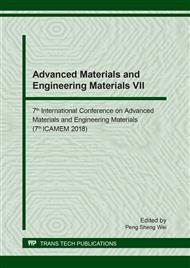p.272
p.277
p.282
p.289
p.294
p.300
p.306
p.311
p.316
Micro-Crack Analyses of Chromium Steel JIS-SCr 420 for Helical Gear Transmission
Abstract:
This research aims to investigate micro-crack on a failed for helical gear transmission which was to adjust the engine to increased horsepower. The helical gears made are from chromium steel JIS-SCr 420. The spectrophotometer test machine was used to detect chemical composition, Mechanical properties were evaluated by Vickers hardness and microstructural analysis with an optical microscope, which the crack of the surface layer and energy dispersive spectroscopy using a scanning electron microscope. The results showed that the fracture characteristic of the helical gear’s surface was expected to beach marks and break away. It can be seen that the mixing failure area of oxide inclusion with carbide surrounding before the liquid state of material will be solidified which caused the failure cause of this helical gear. The summary analysis results can be accorded with the assumption of this research and which help prolong service life of the component.
Info:
Periodical:
Pages:
294-299
Citation:
Online since:
August 2018
Keywords:
Price:
Сopyright:
© 2018 Trans Tech Publications Ltd. All Rights Reserved
Share:
Citation:


